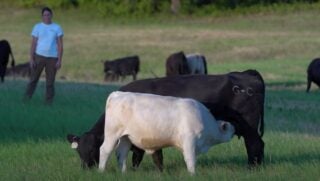A federal judge relisted the gray wolf under the Endangered Species Act, leaving many farming and ranching organizations disappointed.
U.S. District Court Judge Jeffrey S. White reappointed gray wolves as a threatened species in 44 states, not including the northern Rockies, undoing the 2020 delisting. This action strips the states of their ability to oversee the local population and overall management.
Agriculture groups were disappointed with the new ruling. Across the country, increased attacks on livestock are threatening the viability of family-owned farms and ranches.
The National Cattlemen’s Beef Association and Public Lands Council opposed the U.S. District Court’s ruling to remand and vacate the gray wolf Endangered Species Act delisting.
“It’s disappointing that environmental activism carried more weight than science in this case. Rather than ruling on due process and adherence to recovery criterion, Judge White chose to remand the rule and undermine one of the most successful ESA recovery stories in United States history,” said NCBA Executive Director of Natural Resources and Public Lands Council Executive Director Kaitlynn Glover. “This is just another attempt by activist groups to ignore the facts and rewrite the history of gray wolf recovery in the U.S.”
The two groups believe that the wolf population is recovered and no longer meets requirements for a listing. Since being listed under the ESA in 1974, the gray wolf population has seen tremendous recovery, exceeding recovery goals by 300 percent.
In total, the gray wolf population in the lower 48 states is more than 6,000 wolves, greatly exceeding the combined recovery goals for the Northern Rocky Mountains and Western Great Lakes populations.

“ESA should not be used as a permanent management tool. Today’s decision conflicts with the intended purpose of the Act and removes critical management tools for wolves that pose a tremendous threat to farmers and ranchers, rural economies, and vital land and natural resource conservation,” said Glover.
Cattle and sheep producers experience, daily, the consequences of gray wolf overpopulation. “One year, I lost 26 calves due to gray wolf attacks,” said Minnesota cattleman Joe Wilebski. “As a producer, my top priority is the health and safety of my livestock. The consequences of gray wolf attacks go far beyond the immediate loss of livestock. When wolves attack animals, even if they aren’t killed, it causes long-term effects on their overall health and well-being.”
American Farm Bureau Federation President Zippy Duvall said, “AFBF is extremely disappointed in the ruling to return the gray wolf to the endangered species list. The gray wolf exceeded recovery goals and should be celebrated as an Endangered Species Act success story. The ESA is intended to promote species recovery and delisting, not to impose permanent protected status for animals that are now thriving. Today’s ruling ignored ESA goals and threatens recovery efforts for other animals.
“Farmers and ranchers share the goal of a healthy and thriving ecosystem. Management of the fully recovered gray wolf should be overseen by the states, which can best determine the most appropriate course of action for each region.”


